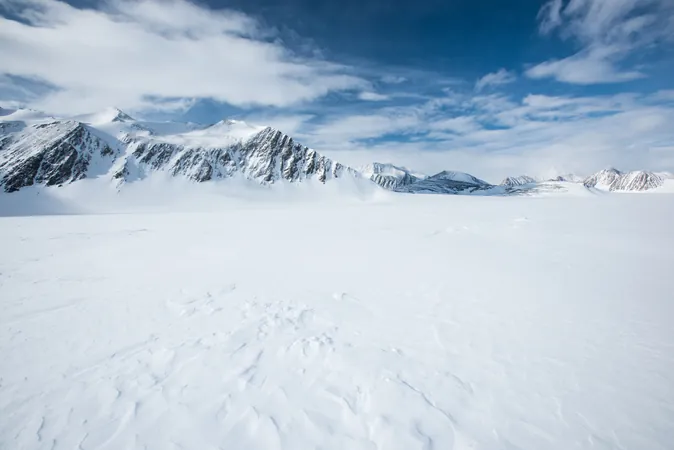
Unveiling Earth’s Climate Secrets: Scientists Tap into 1.2 Million Years of Ice to Predict Our Future
2025-01-14
Author: Charlotte
Introduction
In a groundbreaking discovery, an international consortium of scientists has retrieved the oldest ice core on record from Antarctica, unlocking 1.2 million years of climate history that could reshape our understanding of Earth’s future climate. This extraordinary achievement stems from the "Beyond EPICA" project, a collaboration of twelve scientific institutions, notably led by the University of Bern in Switzerland and coordinated by Italy's Polar Science Institute of the National Research Council.
The Ice Core Discovery
Extracted from a staggering depth of 2,800 meters at Little Dome C on the Antarctic Plateau, this ancient ice core contains tiny, trapped air bubbles that capture critical data about the Earth's atmosphere from over a million years ago. These bubbles are treasure troves of information, revealing past levels of greenhouse gases like carbon dioxide (CO2) and methane, which are vital for understanding the natural climate variability of our planet.
Exploring the Mid-Pleistocene Transition
The research team plans to delve into this record to explore the Mid-Pleistocene Transition (900,000 to 1.2 million years ago), a period that signified a radical shift in climate cycles. During this enigmatic era, the duration between glacial and interglacial periods extended from 40,000 years to an astonishing 100,000 years. This seismic change in Earth's climatic rhythm poses a complex puzzle that scientists are eager to solve. Insights gained from this analysis could illuminate the factors behind current and future climate dynamics.
Modern Climate Models and Ancient Insights
As contemporary climate models struggle to explain the current warming trend, researchers are optimistic that examining these ancient ice samples may reveal the "smoking gun" needed to decode today's climate challenges. In March, the ice samples will undergo rigorous analysis in Europe, leveraging cutting-edge techniques pioneered by the University of Bern.
Cutting-Edge Measurement Techniques
A novel laser beam method developed by the team promises to enhance the precision of greenhouse gas measurements, ensuring that samples remain uncontaminated. Remarkably, this technique only requires a thin 1 cm slice of ice, facilitating highly accurate assessments of historical CO2 concentrations.
Implications for Future Climate Projections
By piecing together this ancient puzzle, scientists aim not only to refine climate models but also to improve projections for future climate scenarios. Understanding the historical interplay between greenhouse gases and temperature variations is essential for anticipating the trajectory of Earth’s climate and informing global initiatives to combat climate change effectively.
Conclusion
As the world grapples with rising temperatures and extreme weather patterns, the secrets locked within this 1.2 million-year-old ice core could be pivotal in understanding and navigating the climate crisis looming over humanity. Will these revelations be enough to spark change? Stay tuned as this monumental research unfolds!



 Brasil (PT)
Brasil (PT)
 Canada (EN)
Canada (EN)
 Chile (ES)
Chile (ES)
 Česko (CS)
Česko (CS)
 대한민국 (KO)
대한민국 (KO)
 España (ES)
España (ES)
 France (FR)
France (FR)
 Hong Kong (EN)
Hong Kong (EN)
 Italia (IT)
Italia (IT)
 日本 (JA)
日本 (JA)
 Magyarország (HU)
Magyarország (HU)
 Norge (NO)
Norge (NO)
 Polska (PL)
Polska (PL)
 Schweiz (DE)
Schweiz (DE)
 Singapore (EN)
Singapore (EN)
 Sverige (SV)
Sverige (SV)
 Suomi (FI)
Suomi (FI)
 Türkiye (TR)
Türkiye (TR)
 الإمارات العربية المتحدة (AR)
الإمارات العربية المتحدة (AR)